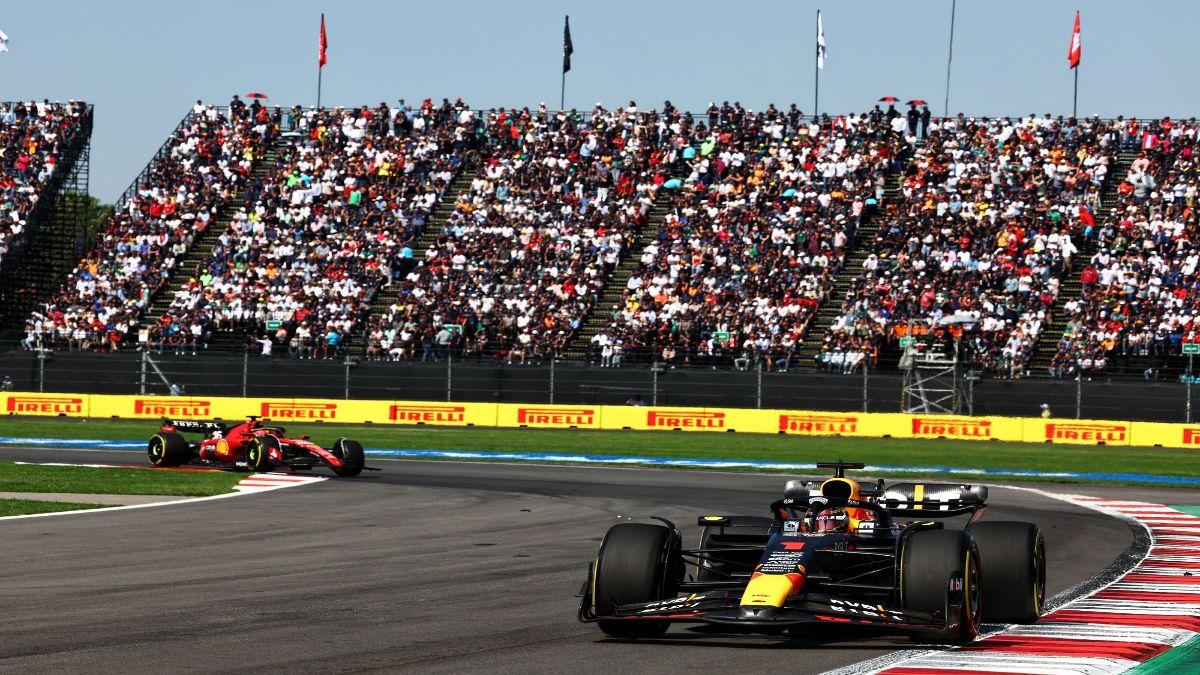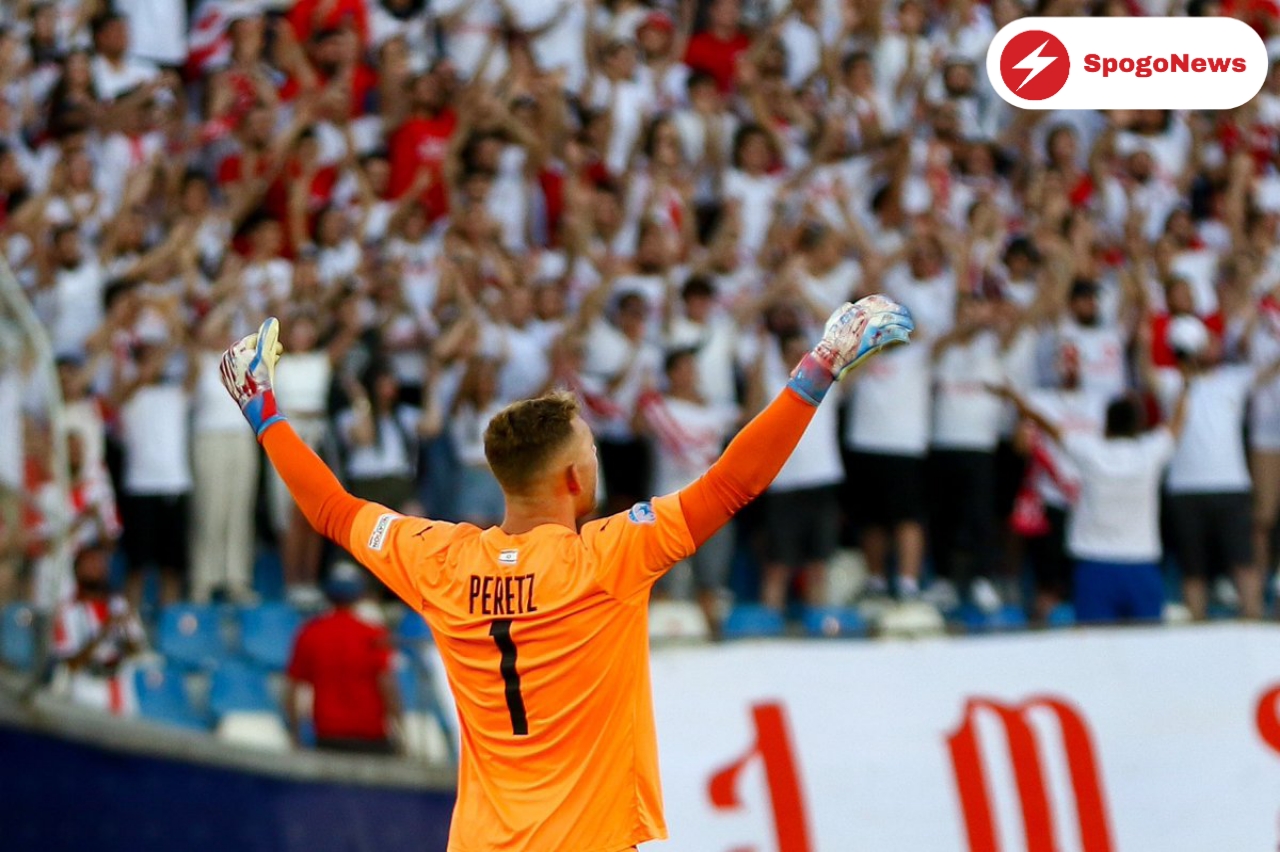(Motorsports news) Max Verstappen won his 16th Formula One race of 2023 in the Mexico Grand Prix, but his unstoppable supremacy is no longer surprising. However, there were a number of other intriguing threads that emerged during the weekend at the Autodromo Hermanos Rodriguez, as speculation about the drivers’ futures in the Red Bull stable intensified in the aftermath; Sergio Perez’s first-corner crash and Daniel Ricciardo’s long-awaited return to the points highlighted their contrasting fortunes.
With a safety car, a driver’s retaliation for a qualifying error, and the unusual circumstances in Mexico City, there’s enough of interest despite a relatively tepid race at the front.
Perez’s attempt to debunk a time-honoured racing maxim adds to the unfavourable evidence:
“You can’t win a race into Turn 1, but you can certainly lose it”. It might seem that some of Max Verstappen’s wins have disproved that statement, having frequently stabilised a lead into the first corner and kept hold of it for the rest of the race. In truth, the wins have come from what happened after that; leading into Turn 1 is merely one of the first milestones.
Sergio Perez, buoyed by the ardent backing of his home audience at Mexico GP, probably wished to dispel such an assumption. A fantastic start fueled him further, but his only alternative was to stick to the outside line and try to hold on through the first corner. If he\
got that right, he’d have the inside track for the following corner and possibly enough elbow room to defend a lead that would have Mexican supporters ecstatic.
“I had a very good start, and I was only thinking about winning the race at Mexico’s Autodromo Hermanos Rodriguez,” Perez later revealed. “I didn’t want to be up there. I’ve been on the podium for the past two years in a row. I spotted an opportunity and took advantage of it. In retrospect, I took a risk, but if I had succeeded, I would have led out of Turn 1.” Yes, it was a risk, but not a particularly calculated one based on prior first-corner incidents in Mexico races. As a result, major doubts regarding his future with Red Bull have arisen.
Ricciardo rewinds the clock with a brave drive:
AlphaTauri had been lightning-fast all weekend in Mexico. Jonathan Eddolls, head of trackside engineering, revealed why the AT04 performed so well in Mexico City, saying that “the car mechanically is very good. Everyone’s struggling with grip, so if you’ve got a good car mechanically, that helps,” he went on to say. “We haven’t quite got the aero efficiency of some of the others but for this track, we’ve got the load in the corners.”
In Daniel Ricciardo’s newly restored hands, this was a potent possibility. His fortunes in Austin could be classified as low-key, but he’s usually been very good in Mexico – and his unexpected fourth-place finish on the grid showed that he had a role to play in the race. Ricciardo’s controlled aggression was one of his biggest qualities during his Red Bull days, but it looked to fade during his stint at Renault and McLaren. But it was clear during his early circuits defense of fourth against Lewis Hamilton; the Australian didn’t have the tools to keep it long-term, but he’d shown his point during the initial flurry of Autodromo Hermanos Rodriguez tours.
Mercedes can now breathe easily at altitude in Mexico:
Since Mexico has been back on the F1 schedule, most people are familiar with the Autodromo Hermanos Rodriguez’s unusual conditions: it’s 2250m above sea level, resulting in a 22% reduction in air density. That translates to less overall engine power; in the 1980s, a naturally aspirated engine was at a substantial disadvantage compared to turbocharged cars since forced induction helped to ease the problem of a sparser fuel-air mixture.
Every car nowadays has forced induction, with the compressor squeezing the air and sending it into the intake system to provide a cleaner burn in the internal combustion engine. The distinctions between the four powertrain manufacturers are in the strength of the turbine-compressor dyad, which Mercedes has lacked in recent years in comparison to Honda.
Mercedes CEO Toto Wolff believes that the powertrain division in Brixworth has been able to close that gap, reducing the Red Bulls’ advantage in Mexico: “HPP [Mercedes High-Performance Powertrains] has done a fantastic job over the past few years; the turbo didn’t breathe well enough was always our Achilles’ heel here.” That’s taken care of, and it’s a robust weekend power unit, just like the others. I am quite happy of what HPP has accomplished with the power unit.”
Tsunoda’s strong will was undermined by self-sabotage:
With AlphaTauri’s pace in Mexico and an offset strategy, Yuki Tsunoda’s back-of-the-grid start had developed into the makings of a strong race. He’d pushed his way up to ninth place by the mid-race restart and managed to hold it despite the jostling for position into the opening turns. This put him on the tail of Oscar Piastri, whom the Japanese driver planned to pass in order to take eighth and cut the gap on teammate Daniel Ricciardo.
However, Piastri proved difficult to overtake. On lap 48, an attempt into Turns 1-2-3 resulted in a smidgen of contact between the two, and the Australian eventually kept the place while possibly leaving Tsunoda with a little less leeway than he’d have preferred. This enraged Tsunoda, who may have let his rage influence his second effort into the first corner on the next lap.
He cut across Piastri, causing further contact and leaving the #22 car in the undergrowth. He was even more enraged at this point, and while he managed to channel his rage into a great turn of pace near the end to stage a comeback, the damage had already been done.
Pitlane impediment becomes a new issue to address:
A precedent was set when Max Verstappen was given nothing more than a slap on the wrist for backing up the cars in the pitlane during Singapore qualifying. Verstappen held up the field once more during the Q1 tailbacks towards the end of the session as the drivers looked to create space for themselves among the final burst of flying laps – and George Russell did the same as the queue was egregiously slow to move.
Verstappen reasoned that the situation was preferable to it occurring on track, a sentiment shared by the stewards in their decision not to impose any further sanctions. “The thing I don’t understand is everyone is trying to make a gap now in the pitlane, which is the only place where we can do so,” he went on to say. “So, I’m not sure how you can be impeding someone.” For me, knowing that it’s a safe place, I believe we should be a little more patient with it.”
Magnussen is fine after a big collision caused by suspension failure:
When Kevin Magnussen ran wide on the Peraltada exit at the conclusion of the 31st lap, it appeared to be an unexpected off-moment at race speed. Valtteri Bottas crashed into the wall there in 2019, and Edoardo Mortara suffered a slip at the line around the full-bore Peraltada in Formula E qualifying last year. But at racetrack speeds? It suggested that something was wrong, and that Haas had experienced another of its now-infamous tyre management troubles.
However, this was a foreshadowing of his subsequent heavy crash in Turn 10. A quick snap prompted his Haas to spear left and crunch the Tecpro barrier while turning right and surfing the curb. During the second red flag, the barrier needed to be repaired, and Magnussen’s rear-left brake smoldered away among the flotsam that had once resembled a racing car.
Slow-motion videos revealed that the Dane’s left-rear wheel turned on its normal axis, corresponding with a trackrod failure that sent Magnussen into the wall. The burning brake was a dead giveaway that the track rod had delaminated due to higher-than-expected temperatures. Due to the high altitude, cooling is also a challenge in Mexico, prompting teams to open their inlets in order to reduce the mass flow rate of air to more typical levels.
Also read: Verstappen wins the 2023 Mexican Grand Prix where Magnussen crashed









